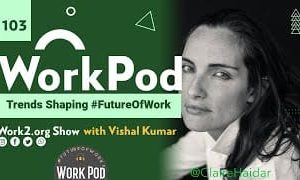In the city that never sleeps, a new archetype of employment has emerged: the gig economy. This shift has been both a mirror and a mold to New York’s bustling urban workforce, encapsulating the flexibility and hustle that defines the Big Apple. But beneath the glossy veneer of on-demand jobs lies a nuanced narrative of opportunity and uncertainty.
The gig economy refers to a labor market characterized by short-term contracts or freelance work as opposed to permanent jobs. In New York, where ambition collides with the high cost of living, many have embraced gig work for its promise of autonomy and entrepreneurial freedom. Yet, as we parse through the pros and cons, a question looms large: Is the gig economy the future of work in New York, or a stopgap in an evolving labor landscape?
Pros of the Gig Economy:
– Flexibility and Independence: Gig workers in New York value the ability to set their own schedules. This flexibility empowers them to balance work with other life pursuits or commitments, be it education, parenting, or side projects.
– Multiple Income Streams: The city’s workers often pursue gigs that provide opportunities for supplemental income. It’s not uncommon to find individuals who are Uber drivers by night and graphic designers by day, painting a multifaceted picture of the modern worker.
– Entrepreneurial Spirit: New York thrives on innovation, and the gig economy dovetails with this ethos. Many workers use gig opportunities as a stepping stone, honing skills and building networks that can lead to launching their own startups.
Cons of the Gig Economy:
– Lack of Security and Benefits: Unlike traditional employment, gig work typically does not offer job security, health insurance, paid leave, or retirement plans. This can be particularly challenging in New York, where the cost of health care and living expenses are incredibly high.
– Unpredictable Income: The feast-or-famine nature of gig work can lead to financial instability. The fluctuating demand for services means a gig worker’s income can vary dramatically from one month to the next.
– Worker Rights and Protections: There’s an ongoing debate about the classification of gig workers. Are they independent contractors or employees deserving of more rights? New York’s policymakers are grappling with these questions, seeking to strike a fair balance.
Economic Impact and Sustainability:
The gig economy has undeniably boosted New York’s economy by filling service gaps and providing jobs. However, its sustainability is under scrutiny. Without proper regulation and support, gig workers may face exploitation. Conversely, stringent regulations could stifle the very flexibility that makes gig work appealing.
Personal Stories of Gig Workers:
Meet Sofia, a freelance digital marketing consultant who revels in the freedom to choose clients and projects, but struggles with the absence of employer-sponsored health benefits. Then there’s Aaron, an app developer who freelances between jobs, finding the gig economy both a liberating and isolating experience.
Policy Responses:
New York has made strides to address the challenges of gig work – from passing legislation that grants minimum wage to rideshare drivers to exploring portable benefits systems. Yet, the question of classification remains a contested frontier.
Long-Term Implications:
The rise of the gig economy may also signify a shift in the traditional 9-to-5 jobs. Employers and employees in New York must ponder how this model fits into long-term career trajectories and the future of work.
As New York’s urban workforce navigates the gig economy, there is a delicate balance to strike. The future of work may not be binary—gig versus traditional—but rather a hybrid that captures the essence of both. The challenge and opportunity for New York lie in shaping a labor market that is as dynamic and resilient as the city itself.




























